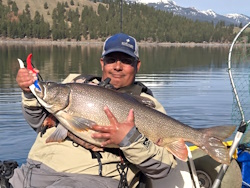|
by hdpwipmonkey
[June 28, 2025, 03:25:42 PM]
by Clayman
[June 28, 2025, 07:37:12 AM]
by Drifter2007
[June 28, 2025, 05:42:03 AM]
by jed
[June 27, 2025, 08:40:38 PM]
by Mojo Jojo
[June 26, 2025, 11:15:57 PM]
by marianigp
[June 25, 2025, 02:09:58 PM]
by Laith
[June 24, 2025, 02:37:40 AM]
by snopro
[June 22, 2025, 11:03:48 AM]
by Mzungu19
[June 13, 2025, 07:00:13 PM]
by BentRod
[June 13, 2025, 02:51:47 PM]
by BigFishy
[June 12, 2025, 06:51:40 AM]
by hdpwipmonkey
[June 06, 2025, 09:02:38 AM]
by BugBoy
[June 04, 2025, 11:55:53 AM]
by hdpwipmonkey
[June 03, 2025, 06:11:22 PM]
by BigFishy
[June 02, 2025, 09:56:49 AM]
 Guess who's back? jed with a spring Big Mack |
|


 Welcome, Guest. Please
Welcome, Guest. Please  June 30, 2025, 04:02:51 PM
June 30, 2025, 04:02:51 PM

You are quite correct when you point out that if you only head to the water on perfect days you will rarely fish.
As my friend Jon always says--"you gotta lay a hairy eyeball on it!".